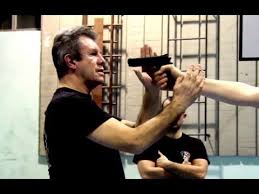
There are somethings you just can’t teach with a Power Point presentation. Nothing beats hands on and within the context of firearms training that means using real guns, in real time, as props. I’m guilty 1000 times over and so aren’t my fellow instructors, Tom, Doug, Mike, and Ken. Don’t worry guys I’ve got retirement taken care of. What a pack of losers. Careful-with-the-props-for-your-bill-of-rights-quizzes. I don’t know which is worse this is the best these whinney cops could come up with. Or, the Sheriff’s Office who did the investigation and Prosecutor who said, yeah we’ve got him now…
Somebody correct my timeline, if I have it wrong. Chief decides to have an impromptu training session. Topic of the day, the 2nd Amendment. He asks a subordinate, “What is the second Amendment. The subordinate does not respond.
The Chief then produces his loaded duty weapon, dumps the magazine and clears the chamber. He then puts the cleared weapon back in battery and shouts his question a second time. Now our dynamic duo decide that the Chief has crossed the line of aggravated menacing. This event occurred in 2010 but they didn’t know they were sufficiently subjected to aggravated menacing, until 2015. So they weren’t menaced with a loaded weapon it was only after the weapon was clearly and demonstrably unloaded that they were victimized.
There was an old Playboy cartoon that makes a similar point. A prostitute is sitting in a detective squad room and telling the detective, “I didn’t know I was raped until the check bounced.”
From the very first day in the academy to the day I retired, thirty years guns were passed around where ever cops gathered. Sometimes it was to show off a new acquisition or demonstrate a particular technique. Back when everybody carried revolvers serious shooters practiced “dry firing”, pulling the trigger on double action, smoothly, and without jerking. (Jerking affected accuracy). It was automatic, unholster, dump the rounds, spin the cylinder, reverse the gun towards your audience obtain a verbal confirmation that the weapon was clear and then do what you were going to do. It went without saying that if somebody new joined the group, he had the right to call for a weapons check, which then performed immediately.
Things didn’t change much with the introduction of automatics (that is semi-automatic handguns that fire a round every time the trigger is activated versus full automatic that fires continuously with one press of the trigger). Drills became more complicated because some required inert ammunition to be effective.
It is the nature of the job that live weapons, (fully loaded) are going to be pointed at live people. Sometimes those live weapons are going to be in the hands of the police, pointed at the police. One of our bread and butter enforcement actions is called a “buy bust”. In this scenario an undercover officer makes an arrangement to purchase a quantity of drugs from a dealer. They agree on a time and place to meet. Typically a busy shopping center parking lot is acceptable to both parties.
Once the meeting took place and the deal was consummated it was up to the undercover to confirm a completed offense, by giving the bust signal and to keep the crook distracted thinking of Cadillacs and blow jobs with his profits. The bust team would then collapse from surveillance positions to “take down positions” and arrest both the crook and the undercover. In reality the officers charged with arresting the undercover were there to get him/her out of the middle of a volatile situation.
Nope, not impressed with the Put-in-Bay version of law enforcement. Course, I’m old, I get to talk about what I used-to-could do and the way we did things. Used to run with the big dogs, now I just stay up on the porch.